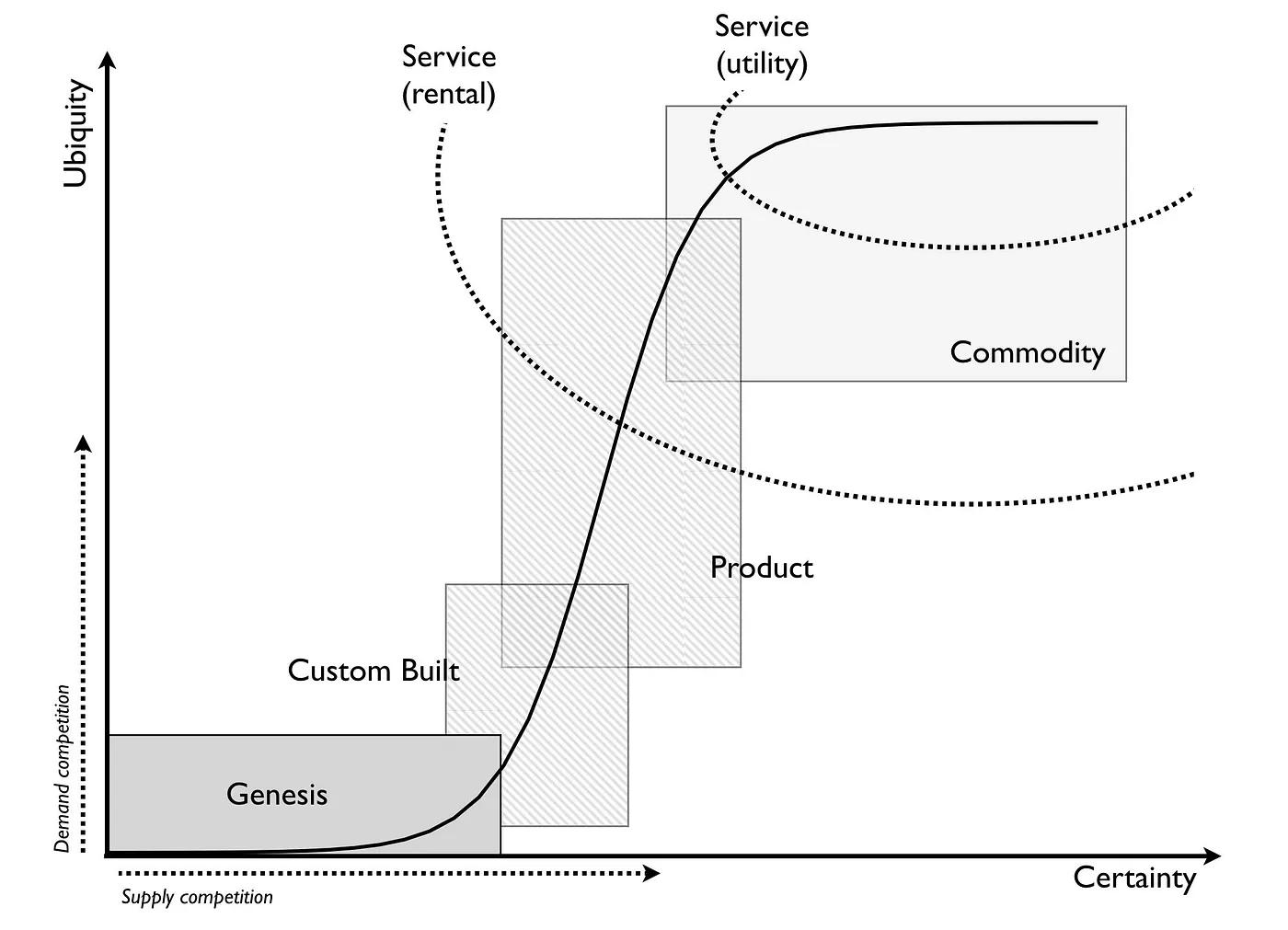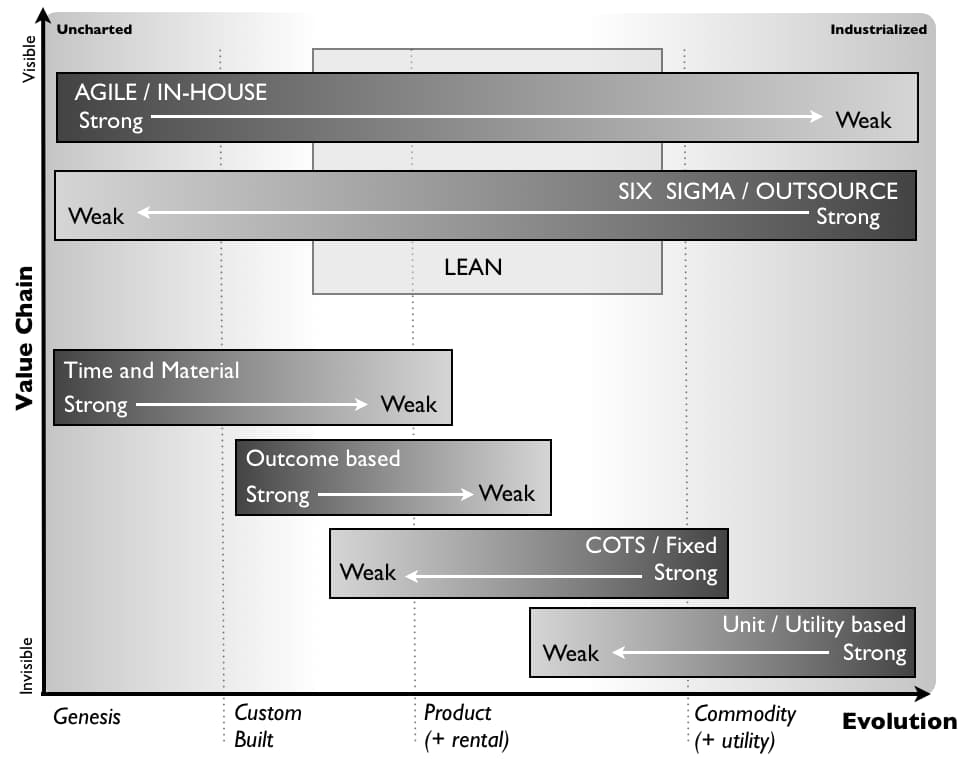Phase: Stop Self Harm
Principle: Use Appropriate Methods
Practice: Use Appropriate Purchasing Methods
Use Appropriate Purchasing Methods
Development
Motivation
In business, the industrialized domain encourages coherence, coordination, efficiency, and stability. Yet, the discovery of new capabilities in the uncharted domain requires experimentation. Any structure, a company, or a team, needs to manage both of these polar opposites. Components are also evolving between these extremes. These transitional components have a different set of characteristics. They need a third mechanism of management.
Consider these first
Illustrative description
You can buy capabilities from each evolutionary stage. You should ensure you use an appropriate purchasing method.
Detailed description
An appropriate purchasing method relates to the certainty of a component.

In Genesis, there is no certainty. Outcomes are unknown. It does not make sense to provide a detailed specification of the need. Instead, spend on time and materials like venture capitalists do. Outcome based spending becomes more appropriate with improved certainty of custom builds. Per product pricing and fixed cost become more appropriate for products and rental. And in the industrialized components, unit and utility billing becomes appropriate.

Reminder: Stop reading, take action
